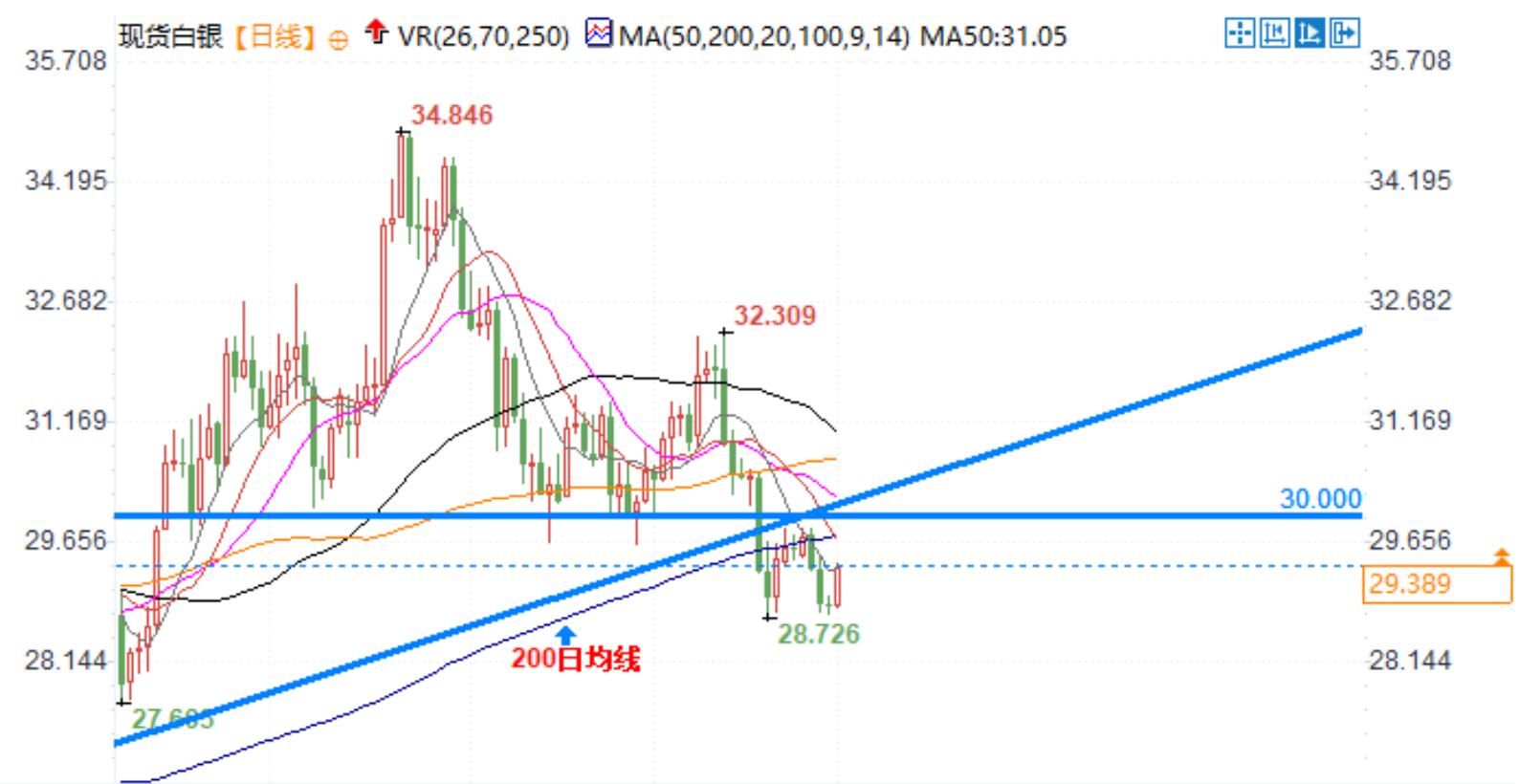Silver's strong start to the new year: can it break through the $30 mark?
At the beginning of 2025, silver prices have shown strong performance. On Thursday (January 2nd) during European trading, silver prices have risen to a high of nearly $29.40. This rise benefited from the decline in the yield of US treasury bond bonds. In the past four weeks, the yield of 10-year US treasury bond has risen by more than 10%, but recently it has fallen back to around 4.55%. The decline in bond yields reduces the opportunity cost of holding non yielding assets such as silver, thereby enhancing the attractiveness of silver.
At the same time, the US dollar index traded around 108.70 (the high range in the past two years), showing relatively strong performance. Despite the stable trend of the US dollar, its inhibitory effect on silver prices is limited.
The outlook for Federal Reserve policy supports silver: Federal Reserve policy is an important fundamental factor affecting the silver market. In 2024, the Federal Reserve has cut interest rates three times, totaling 100 basis points, bringing the federal funds rate down to 4.25% -4.50%. However, the market expects a slowdown in interest rate cuts in 2025. Goldman Sachs analysts predict that the Federal Reserve will cut interest rates by another 25 basis points in March 2025, followed by two more cuts in June and September, with interest rates ranging from 3.50% to 3.75%. The slow pace of interest rate cuts by the Federal Reserve and the expected relative decline in interest rate levels provide support for silver.
The impact of US economic policies
Under the leadership of the new Trump administration, US economic policies will receive much attention. President Trump plans to implement a series of economic stimulus policies, including strengthening immigration controls, increasing import tariffs, and reducing taxes. These policies are expected to stimulate overall economic activity while boosting market optimism about future economic growth.
However, analysts believe that the economic growth that these policies may bring still needs to be observed in terms of their specific impact on inflation and the job market. If inflation expectations rise, the demand for silver as an inflation hedge tool may also increase.
In terms of technology, analyst Dua provided the following interpretation:
200 day moving average (EMA): Silver prices are currently rebounding near the 200 day moving average, which is at $29.40. This level is of great significance for short-term trends. If the price can effectively recover from this level, silver may further rise.
On the 14th, the Relative Strength Index (RSI): The RSI indicator has rebounded to above 40. If silver prices can remain above this level, it may indicate that the recent downward momentum has ended. However, RSI needs to further break through 50 to confirm that market sentiment has shifted from bearish to bullish.
Trend line analysis: Silver prices are currently below the upward trend line since the low point on February 29, 2024 ($22.30). Before breaking through this trend line, the overall trend of silver is still considered bearish.

Key support level: The first key support level for silver is $27.75, which is the low point in September 2024. If it falls below this level, it may trigger greater downward pressure.
Key resistance level: The upper resistance is located near the 50 day moving average, which is $30.90. If the price breaks through this resistance level, it will open up further upward space for silver.
Short term trend: In the short term, silver prices benefited from the return of treasury bond and technical rebound. However, if the price cannot effectively recover $29.40, there may be a risk of another pullback.
Mid term trend: The medium-term trend still depends on the actual progress of global economic policies, the trend of the US dollar, and the Federal Reserve's monetary policy. If the Federal Reserve continues to cut interest rates in the second half of 2025, silver may regain strong upward momentum.
Summary and Prospect
At the beginning of 2025, the silver market showed a strong upward trend, mainly driven by the decline in US bond yields and the increasing attractiveness of non yield assets. From a fundamental perspective, Federal Reserve policies, the outlook for US economic growth, and the trend of the US dollar remain key factors affecting silver prices.
Technically speaking, the short-term trend of silver tends to rebound, but it needs to effectively break through $29.40 to open up further upward space. If it fails to break through, silver prices may rebound to the key support level of $27.75.
In the coming weeks, the market will closely monitor the impact of the following factors on silver prices:
Federal Reserve policy direction: The pace of interest rate cuts will have a direct impact on the US dollar and silver markets.
The implementation effect of US economic policies: If the policy stimulates economic growth beyond expectations, it may boost demand for safe haven assets.
Global economic uncertainty: Geopolitics, inflationary pressures, and changes in market sentiment will continue to provide potential support for silver.
In general, in the first quarter of 2025, the silver market may experience a process of first rising and then adjusting under the influence of the Federal Reserve policy and global economic changes.
Tips:This page came from Internet, which is not standing for FXCUE opinions of this website.
Statement:Contact us if the content violates the law or your rights
